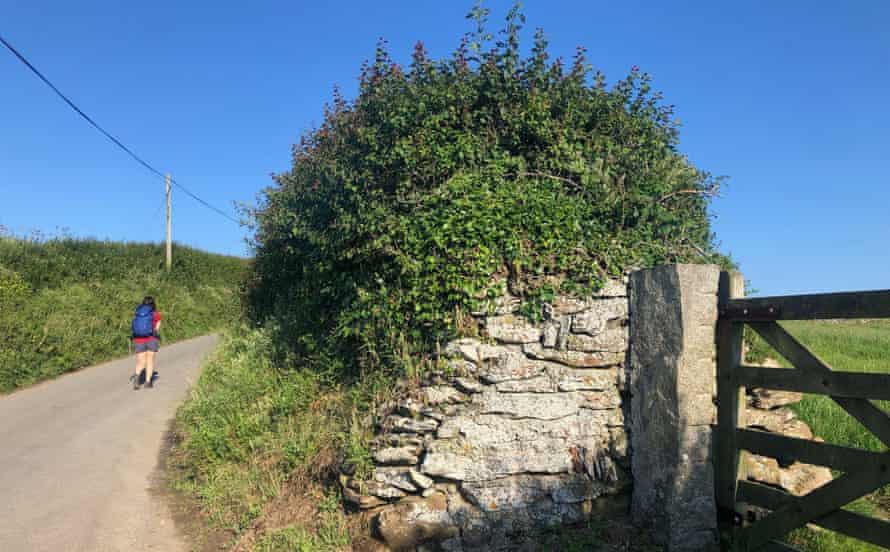Country diary: ‘hedge’ is too small a word for these wild Cornish giants
Port Quin, Cornwall: In places, these vertical jungles reach five metres high, constricting the lanes into deep green ravines

The narrow road is flanked by things for which the word “hedge” seems inadequate; they are more like walls of wildness, bristling and impenetrable linear jungles where the vegetation is so abundant and overflowing that it is hard to tell one plant from another.
In places, these super-hedges reach five metres high, constricting the lanes into deep green ravines, the sides bristling with a heady jumble of trees, bushes, herbs, creepers, ferns and flowers. When we arrived here last night, via these gorge-like back roads, my car’s proximity sensors were continually confused by drooping foxgloves and lolling heads of agrimony.
Today, on a wander down to Port Quin, I take a closer look at one of these formidable boundaries. Celebrated hallmarks of the Cornish landscape, there are 30,000 miles of them weaving through the county, some still following lines inscribed in the bronze age.
This one is like a forest floor – wildflower meadow and scrubland combined – flipped vertically. The greenish-white hazes of hedge bedstraw, with its fine-petalled flower clusters, roam through the hedge like breeze-blown clouds. Blooms of honeysuckle, buddleia and meadowsweet throw out heady billows of scent. There are sprawling knots of ivy and bramble. A wind-flattened hawthorn grows from the top of it all, sculpted by winds from the Atlantic. There is the blue-violet of tufted vetch; the pinkish white of dog rose; an extravagant cluster of purple betony. Zooming in further, there is herb robert, devil’s-bit scabious and the occasional sprig of wild fennel, which thrives in the salt-sprayed maritime soil.
There is a kind of heady midsummer madness to it all, but it is a controlled chaos, underlain by careful construction work. The road-facing side of the hedge is all riotous plant life, but a glance around the “back” reveals a drystone wall, built from the local Devonian slate in a rough herringbone pattern that reinforces an earthwork core.
The “hedge” is an ingenious fusion of artificial and organic elements, part wall and part wood, a hybrid of human skill and natural creativity. The result is something impregnable that will endure for a very long time.